
Things we like
- Head-up display (no adjustment needed, which I usually can’t work out)
- Easy CarPlay connection
- Smooth take-off and transition from EV to fuel
- Regen braking
- 360-degree camera parking is a breeze
- Huge internal flat working space for my gear with all rear rows down
Not so much
- Start-stop button (Operator error, I don’t hold it long enough to start it and must press it again)
- Home recharging is inconsistent to activate likely user error
- Fuel efficiency spike on Charge mode
Snapper Ellen’s battery charging duties just became a little more involved.
JUMP AHEAD
- Part 1: Large and charge
- Part 2: Things that go bump in the night
- Part 3: Running on empty
- Part 4: Going full eco

Part 1: Large and charge
- Price as tested: $71,790
- Overall: 761km @ 5.8L/100km
What does this button even do? Let’s rewind a bit.
You’d have thought that working with cars for 27 years as an automotive photographer I’d have been reasonably up to speed on how cars work, but I’ll admit it – I’m floundering a little with this plug-in hybrid Mitsubishi Outlander. Let’s just say it’s a steep learning curve.
I’ll concede that driving and testing vehicles isn’t the same as photographing them. With the former, you tend to stand in fewer cow pats, your suntan is pretty feeble, and the way that you interact with the car is very different.
Put somebody like Ponch or Dylan in a car and they’ll figure it out in minutes. Me? I’ll take a bit longer, and that’s why I reckon I’m going to be a little more representative of what the average buyer might have to contend with when they’re considering such a technologically advanced car as this Exceed Tourer version of the Outlander PHEV.
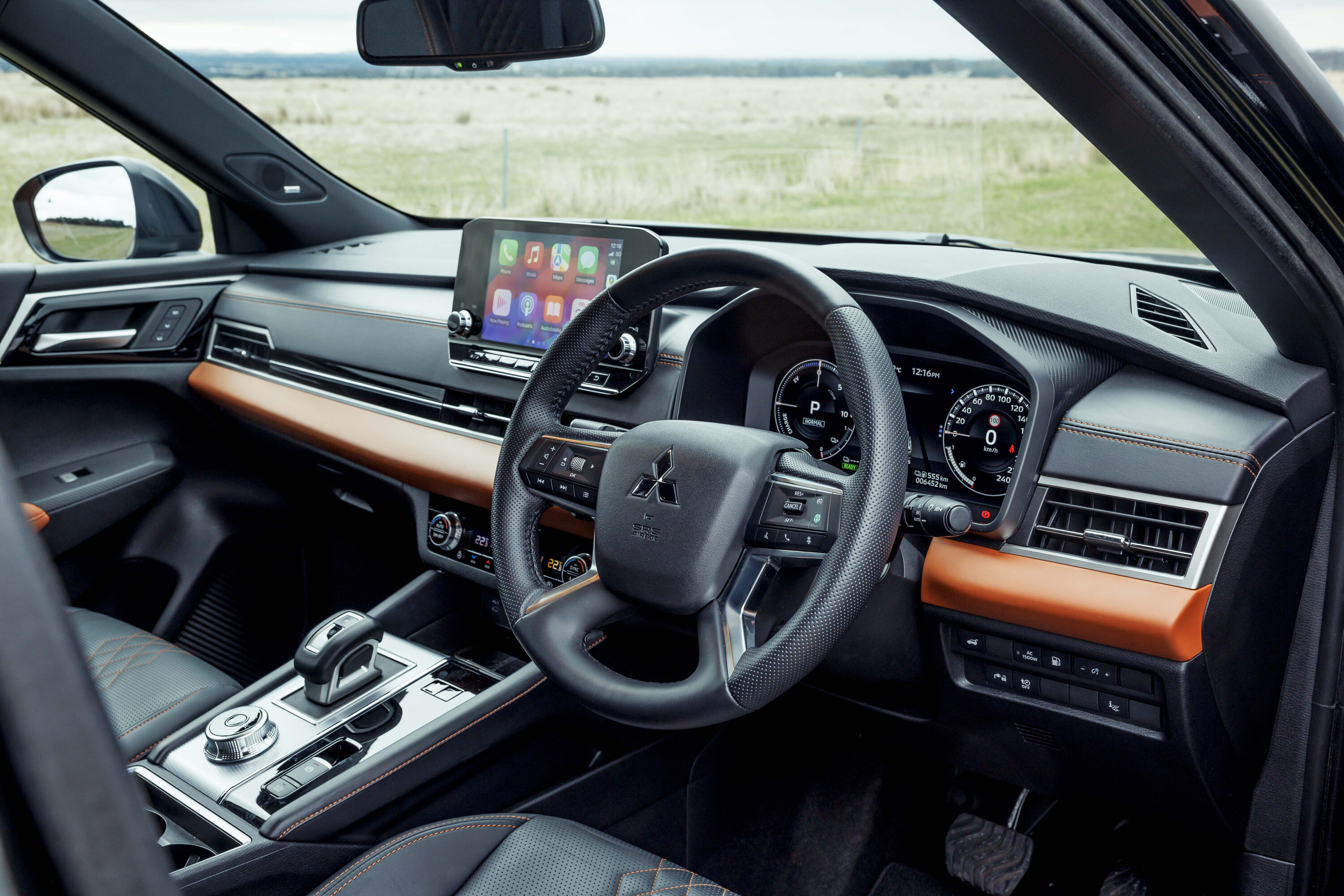
Over the next few months, it’ll be put through its paces – daily quick trips around the inner west of Melbourne, stretching its limits off road, and lugging camera gear hither, thither and yon.
Yes, the Outlander PHEV is a familiar face on Australia’s roads, having first debuted way back in 2013. This fourth generation appeared in 2022 and, by common consensus, is a huge step forward from its predecessor in terms of refinement and quality.
I like the idea of a plug-in hybrid in that it emphasises a certain environmental responsibility and minimising emissions but doesn’t carry with it the range anxiety that’s always nagging in the back of your mind if you choose a full EV.

And, with my work often requiring me to cover big mileages, that’s a worry that I could probably do without.
Depending on how broad your take on this sort of thing is, plug-in hybrid crossover/SUV rivals could include vehicles such as the $64,990 Cupra Formentor VZe, the $78,500 Alfa Romeo Tonale Q4, and the $82,915 Peugeot 3008 GT Sport, but none offer the space and easy utility of the tried and trusted Outlander. Small wonder it’s long been Australia’s favourite plug-in hybrid.
As tested, this is a top-spec Outlander PHEV Exceed Tourer AWD – a five-plus-two (or ‘seven-seater’ in Mitsi-speak) – priced at $71,790. But should you wish to jump into the Outlander PHEV family at a more accessible price point, things kick off at $57,290.

Refinements such as two-tone leather upholstery, front massage seats, and rear-seat heating set the Exceed Tourer apart from the other Outlander models. You’ll also find a 10-speaker Bose stereo, tri-zone climate control, rear door sun blinds and a panoramic sunroof.
As an inner-city dweller with a large 4×4, I occasionally feel a little judged, but endeavour to ride, walk or take public transport when I can, and use the Outlander for longer adventuring and work commuting.
Mitsubishi claims a combined economy of 1.5L/100km, but it’s clear that this figure is very dependent on how often you get to plug the thing into the mains.
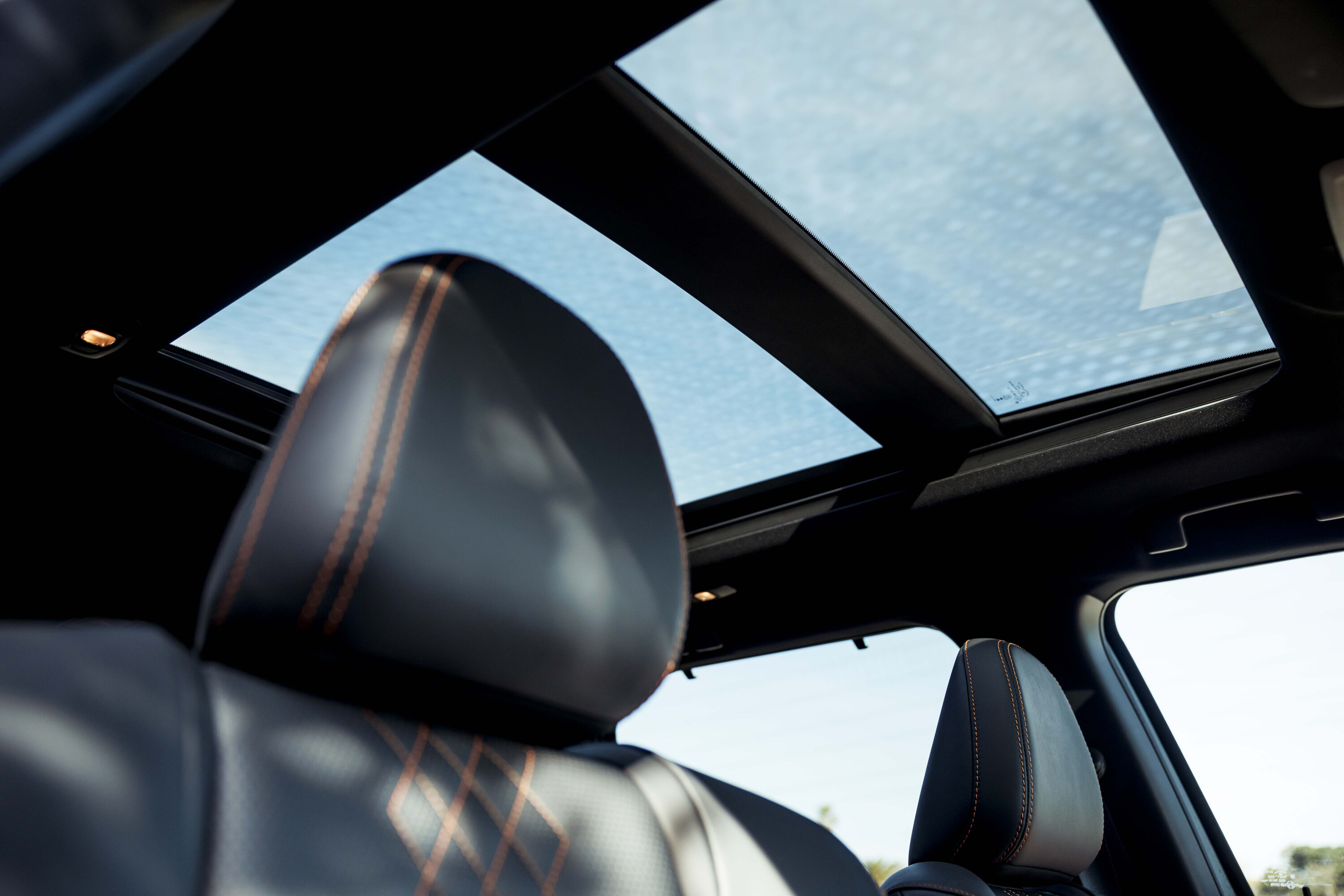
I’ve also been button-happy, swapping and changing driving modes like free TV channels to find what’s better. There’s Normal, EV, Save and Charge.
I’m getting to grips with how they each function, but it’ll take a few more kilometres under the Outlander’s belt to report on exactly what effect they have on its efficiency.
The interior feels spacious, with the glass roof adding to an airy feel. The front seats feel comfy, but I’ve found the base of the seat quite long for my 5ft 1in stature and it cuts circulation a little on longer drives. Seat warmers are welcome in a Melbourne winter, but the jury’s still out on the massage function. Maybe it’s best saved for a long day and drive home.
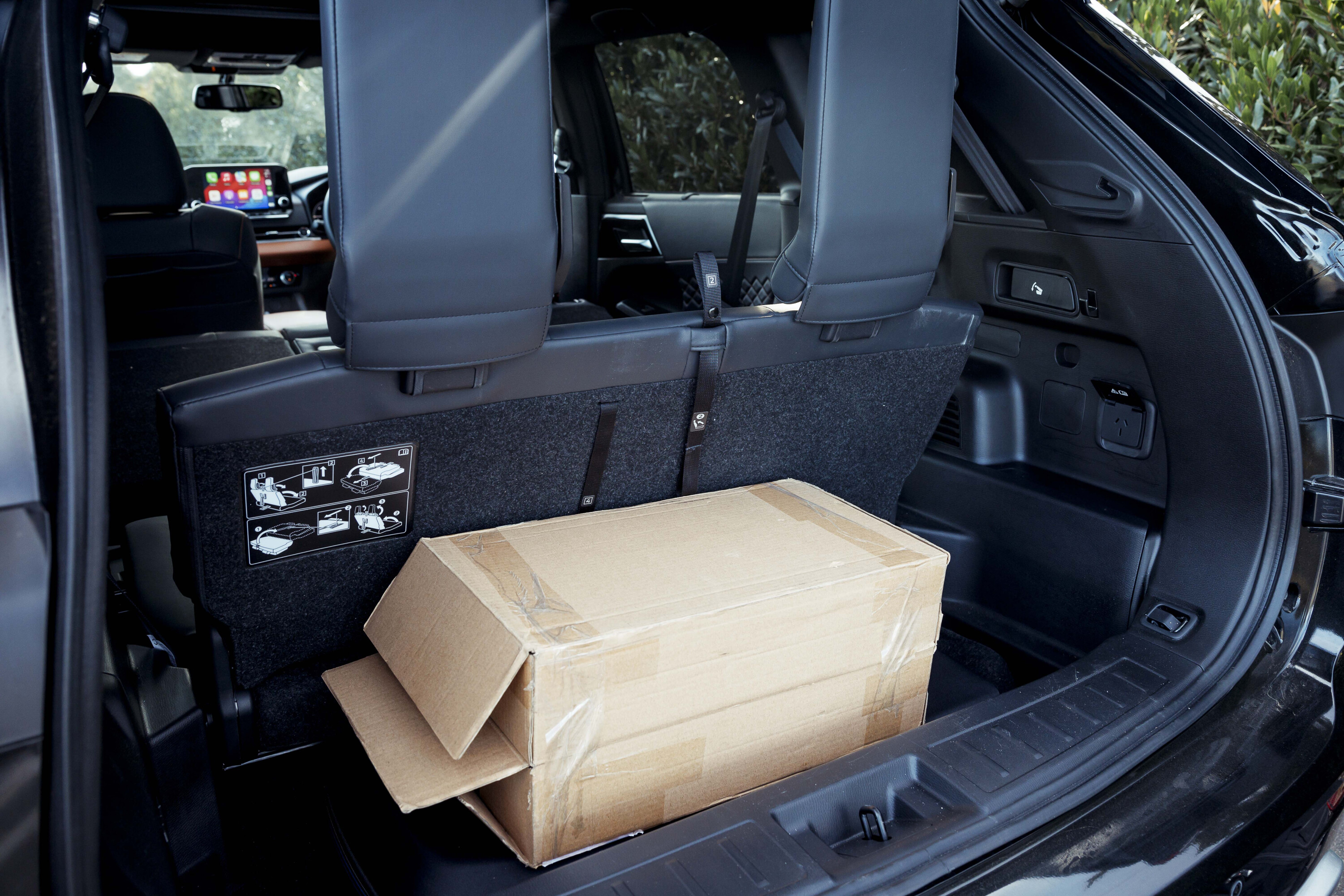
On collection, the third-row seat combination caught me unaware, thinking I was stuck with the rear seats folded up with only a small, deep boot with 161 litres.
It took reading the instructions on folding down the third row to discover, to my excitement, a large and fully flat luggage base with all seats down to house my mountains of camera gear or camping paraphernalia. In standard two-row configuration, space is reasonable at 461 litres.
I have some big trips planned and some serious hauling tasks for the Outlander to undertake in the next few weeks that’ll really test its mettle. But for now, this PHEV newbie is enjoying the journey.
Part 2: Things that go bump in the night
- This month: 781km @ 6.1L/100km
- Overall: 1542km @ 6.0L/100km
Dark, cold, early starts are part of the gig if you sign up to be a car photographer, but even after all these years, I’m still not a natural.
Today I’m on dog-walking duties at, checks clock, 6:02 am. It’s not quite windscreen defrost territory, but not far off and I’m setting out to meet a mate to walk my four-legged bestie, Cleo.
Donning more layers than I care to load in one wash, they’re having the unfortunate effect of temporarily insulating me against the Outlander’s heated seats, even on the maximum level three setting. Fail. I prod the start button and attempt to clack the shifter back into drive and – clunk. I ought to have learned by now.
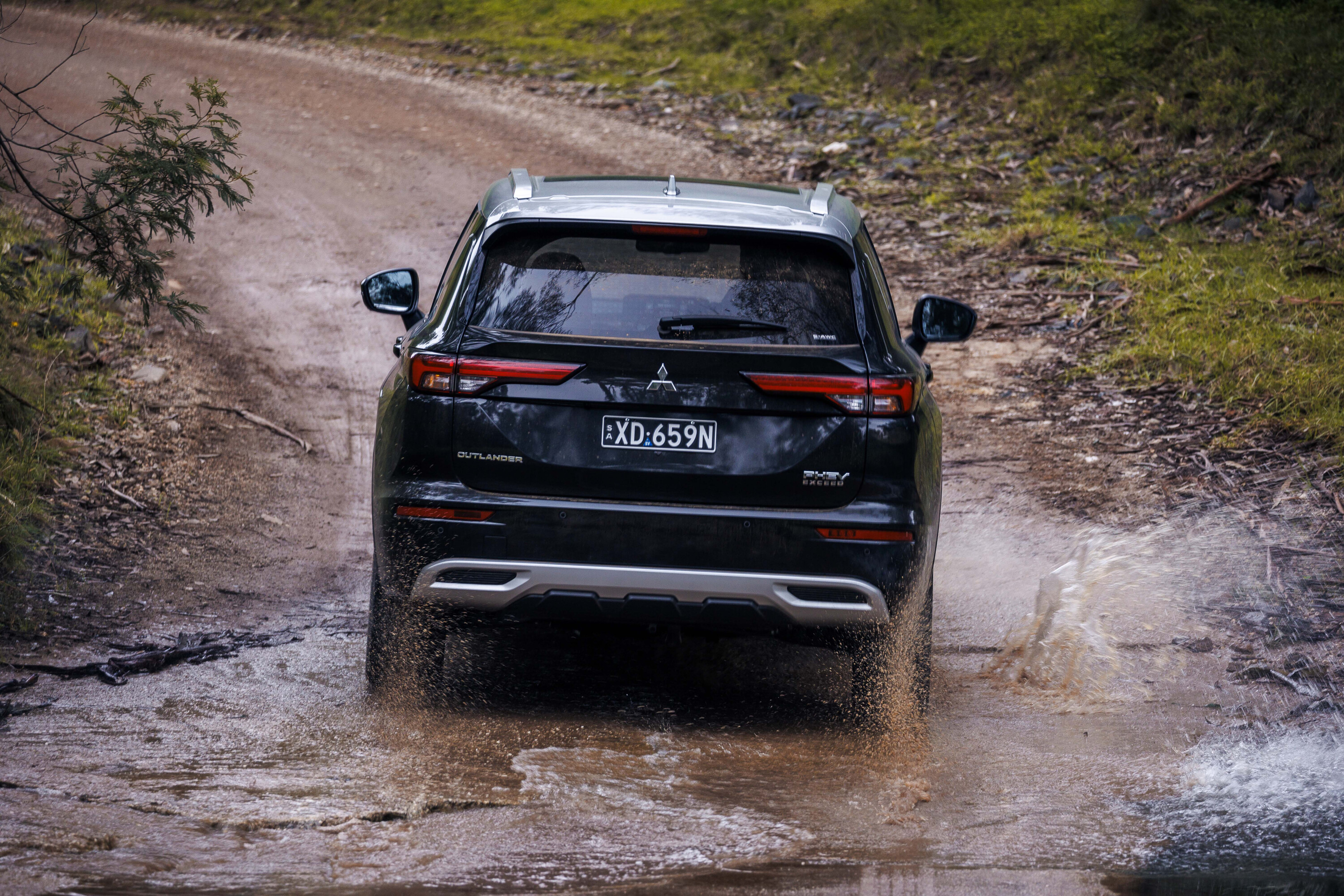
One press on the starter button and the Outlander’s accessory system comes to life.
You need a longer hold to actually make the PHEV system ready to drive. It’s something that’s repeatedly frustrated me, and its simple, but I’ll get it right eventually.
In EV mode it whispers out the driveway. I can see how close I’m getting to the topiary (okay, a bush) with the 360-degree cameras, a revelation I’m loving; great vision and no disgruntled neighbours aside from the odd-sounding duck quack as you reverse.
Perhaps I’ve become a bit lulled by the Outlander PHEV’s silent progress away from my house because I’m suddenly scared witless by an almighty thud. Even the dog looks shocked. After a bit of poking around in the luggage bay, I realise that the folded third-row seats have the propensity to raise up and then crash back down when the vehicle’s negotiating speed humps at anything faster than a crawl.
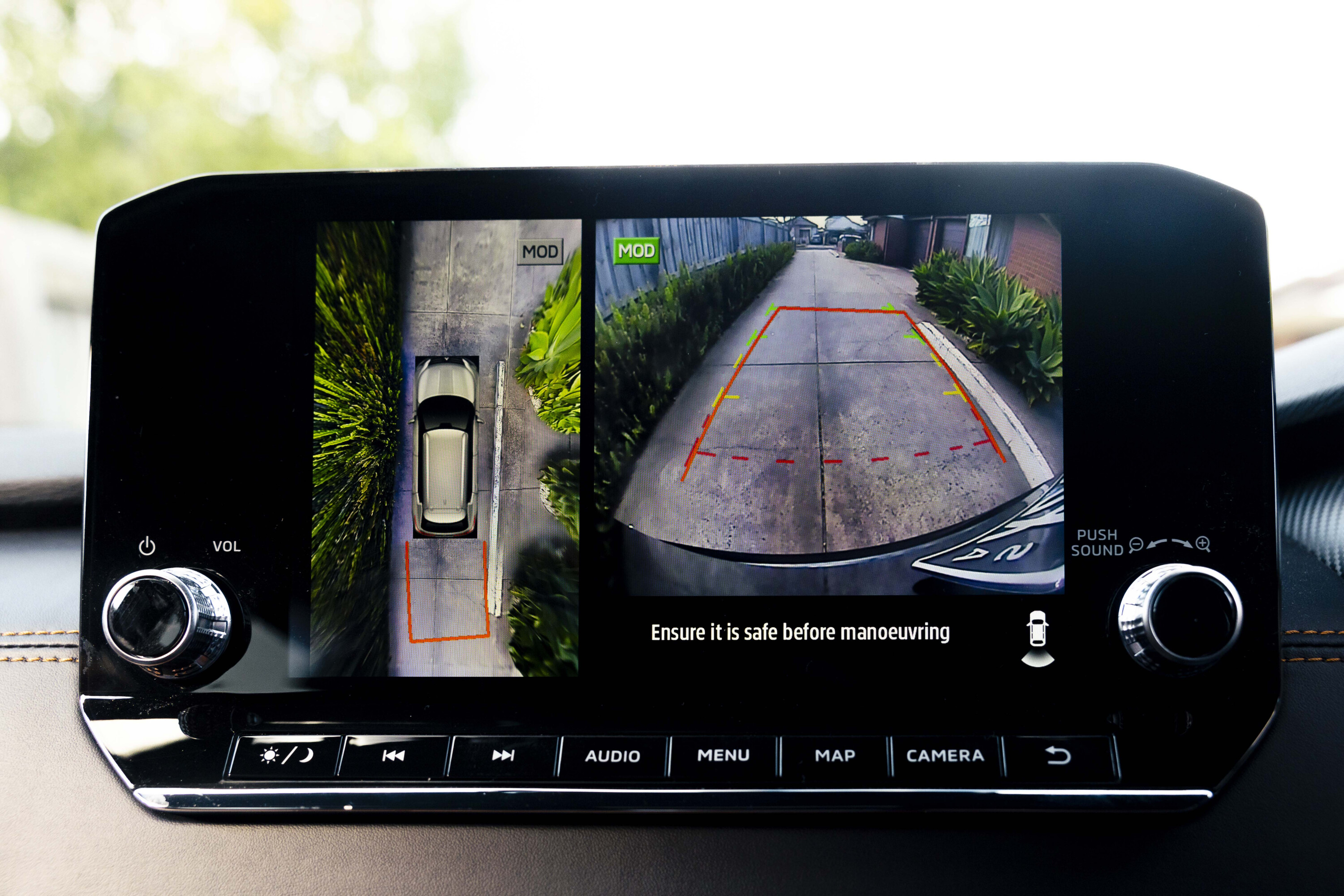
Unless I can lock them down, this is going to be annoying as my inner-city suburb is riddled with ’em.
In the last few weeks, I’ve attempted to spend the majority of my time in Eco mode to maximise driving range, accelerating gently, capitalising on the regenerative braking to slow and recharge. The early figures showing 2.2L/100km and 91% EV and I felt genuinely chuffed that I was making a difference.
What I wasn’t expecting was the length of home charging time. 12+ hours was giving me a mere 58 kms. The charging process seemed straightforward enough, but on a few occasions it just wouldn’t charge. Hmmm. Might need to resort to reading the instructions after all.
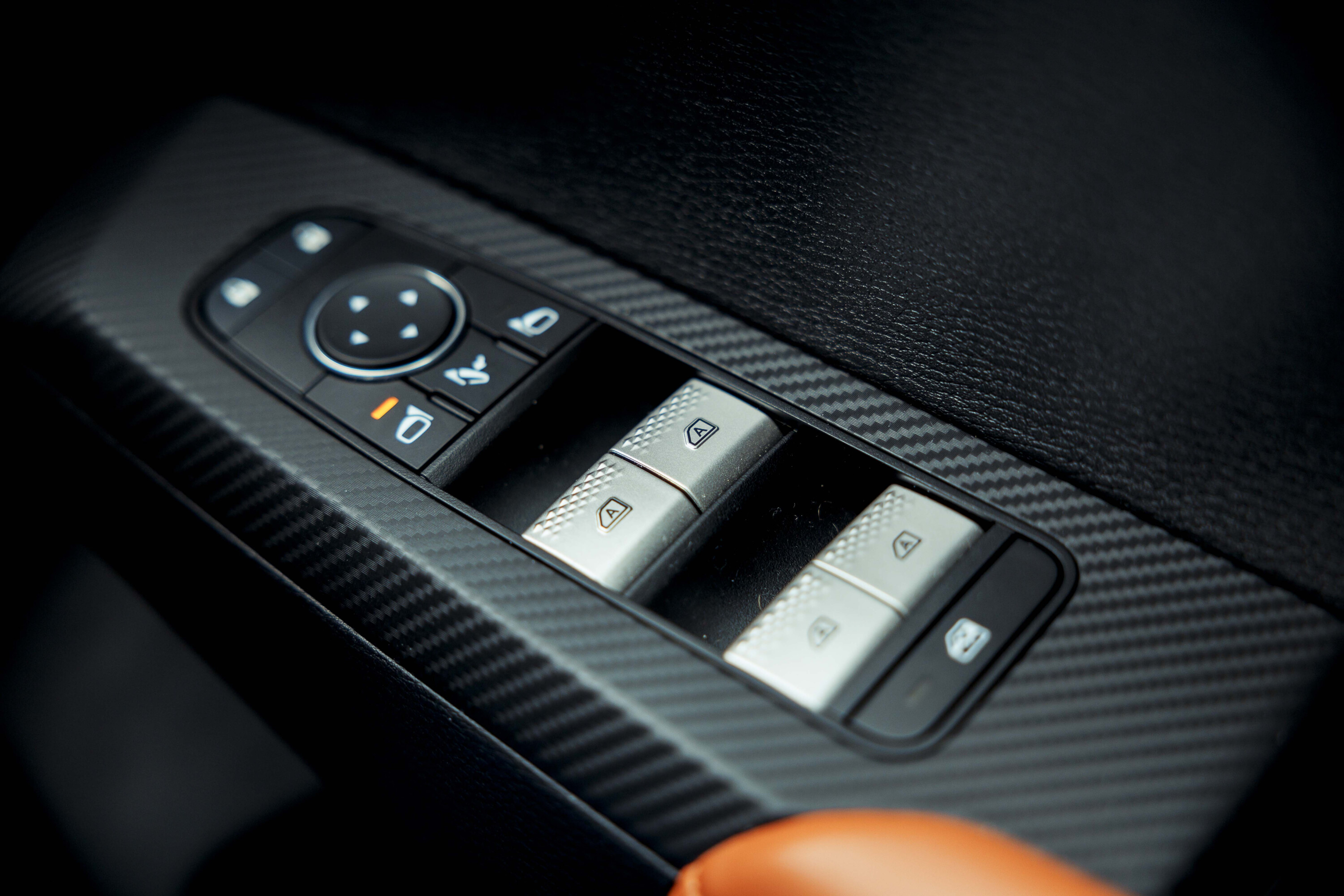
Some quick observations? On the job, with my four-legged assistant Cleo in tow, her doggy bed matches the supple two-tone interior so perfectly that sometimes you need to double-take to spot her: a match made in heaven.
I’ve experimented with the Charge setting and this sends the fuel consumption straight up to 8L/100km, but I’ve never felt tempted to use a public charging station. CarPlay is a sinch to connect and hasn’t dropped out on me yet.
The head up display is fantastic with no adjustment required and even shows what song you’ve skipped to on Spotify while smashing out distance, and the Bose sound system is excellent.
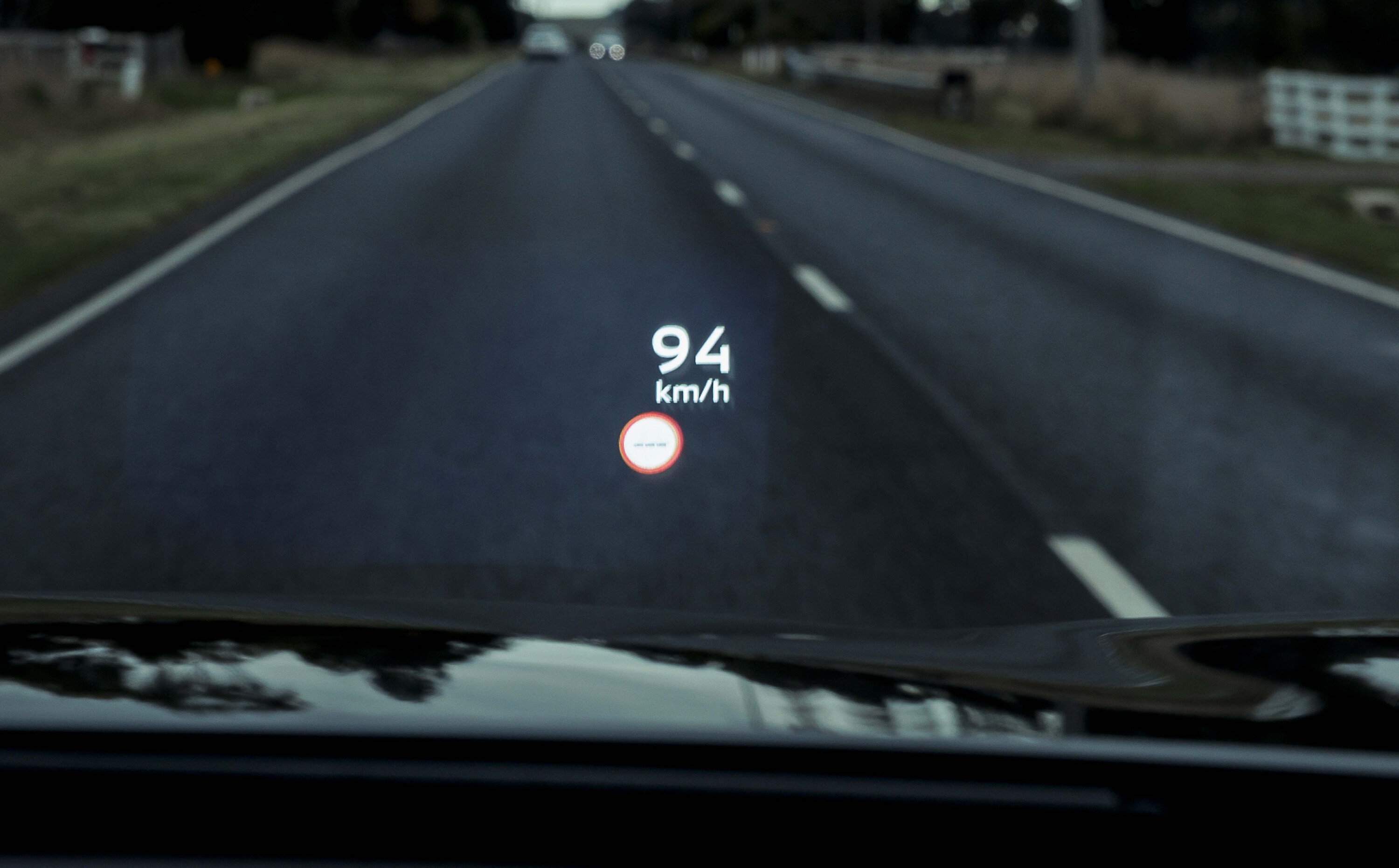
With easy dial-selected drive mode selections, I head onto the dirt and find the Outlander’s ride remains fairly composed even on corrugations.
I splash through a modest stream, but I’m acutely aware that this is no Defender. That becomes apparent when I arrive at my location and the entry to the harder off-road section has a big hump that exceeds the Exceed’s ground clearance. Perhaps that’s why it’s there, but it reminds me that this is a case of horses for courses.
On that note, the Outlander’s proving a convenient work horse with huge flat luggage space all rear rows down, and it’s loaded up up for several taxing shoots in winter.
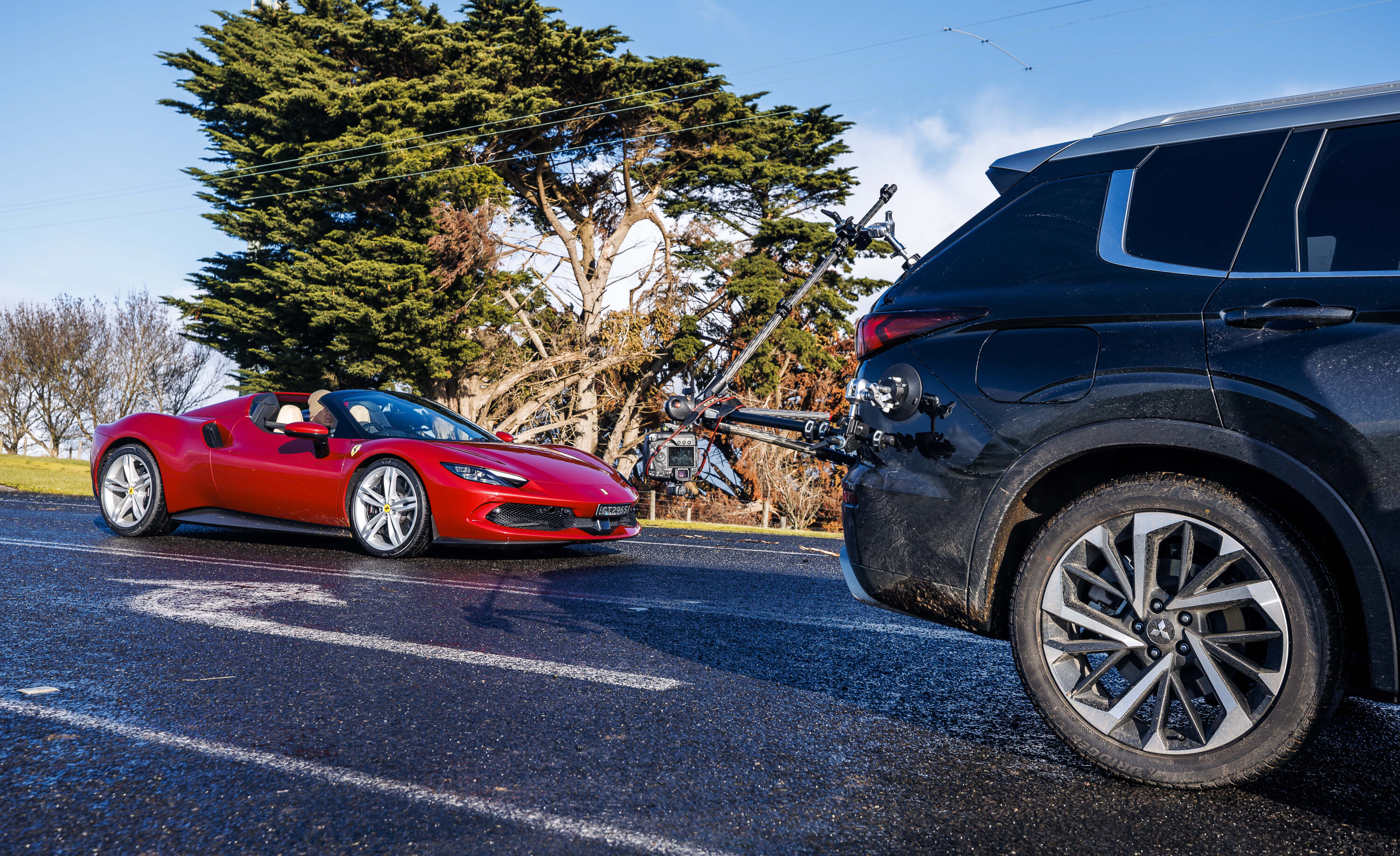
Extending the cars use into a moving tripod the regen helps to hold a steady speed as I sit a couple of metres from the rear of a near-million dollar Ferrari 296 GTS in fairly harrowing conditions. The Outlander makes it all seem easy.
I love my cars having owned numerous hot hatches, owing a large 4×4 and a classic BMW 2002, I’m not too proud to admit the plug-in hybrid tech initially puzzled me, but gradually I’m being converted to hybrid.
I want to make a difference whilst doing short commutes, but I still need some longer legs for my regular long weekends away. I’ll be testing this couple of months as I head north to Byron for a sunny break.
Part 3: Running on empty
- Price as tested: $71,790
- This month: 832km @ 6.4L/100km
- Overall: 2374km @ 6.2L/100km
Ellen’s been playing fuel light bingo but the Mitsi has the last laugh
I wasn’t sure whether it was the clearing fog into the warmth of an unusually sunny autumn day, my sense of adventure or just reminiscing about car flicks of old, but I’m reminded of 1982’s Running On Empty. Or, as a blind man once said: “You cats need any go juice, its 10 miles up the track!”
Upon closer inspection, that random recall was being sparked by something a good deal more tangible, the low fuel light, which I’d been subconsciously ignoring for the last 70+ kilometres. Then the battery distance just blipped to zero. Okay, this was getting my attention.
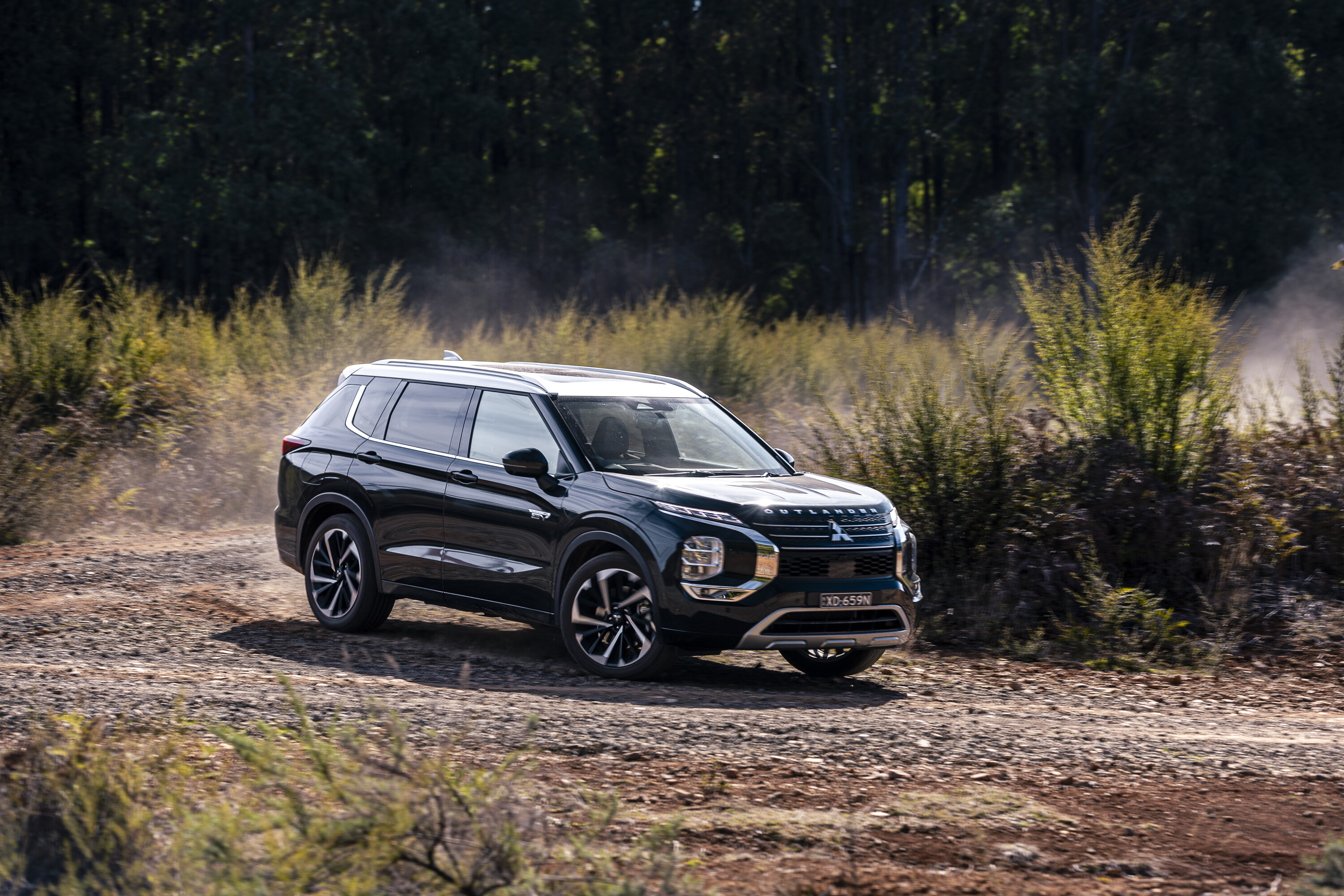
I’m not quite in Woop-Woop, but I’m not far off, on a photoshoot that calls for big country, and I thought a self-appointed challenge could be fun.
Fully charged overnight (I’ve got this worked out now) with stated 67km battery range, I switched to SAVE mode. Rookie error.
I punched in my rendezvous point – Glenburn, 95km northeast of the big smoke. The fuel level sits just above a quarter, which seems enough range for my return.
Google Maps send me the scenic route, twisting through Kinglake. The Outlander’s making light work of this. Low-effort schlepping is its forte, the light but accurate steering allowing you to position it deftly on the way into corners.
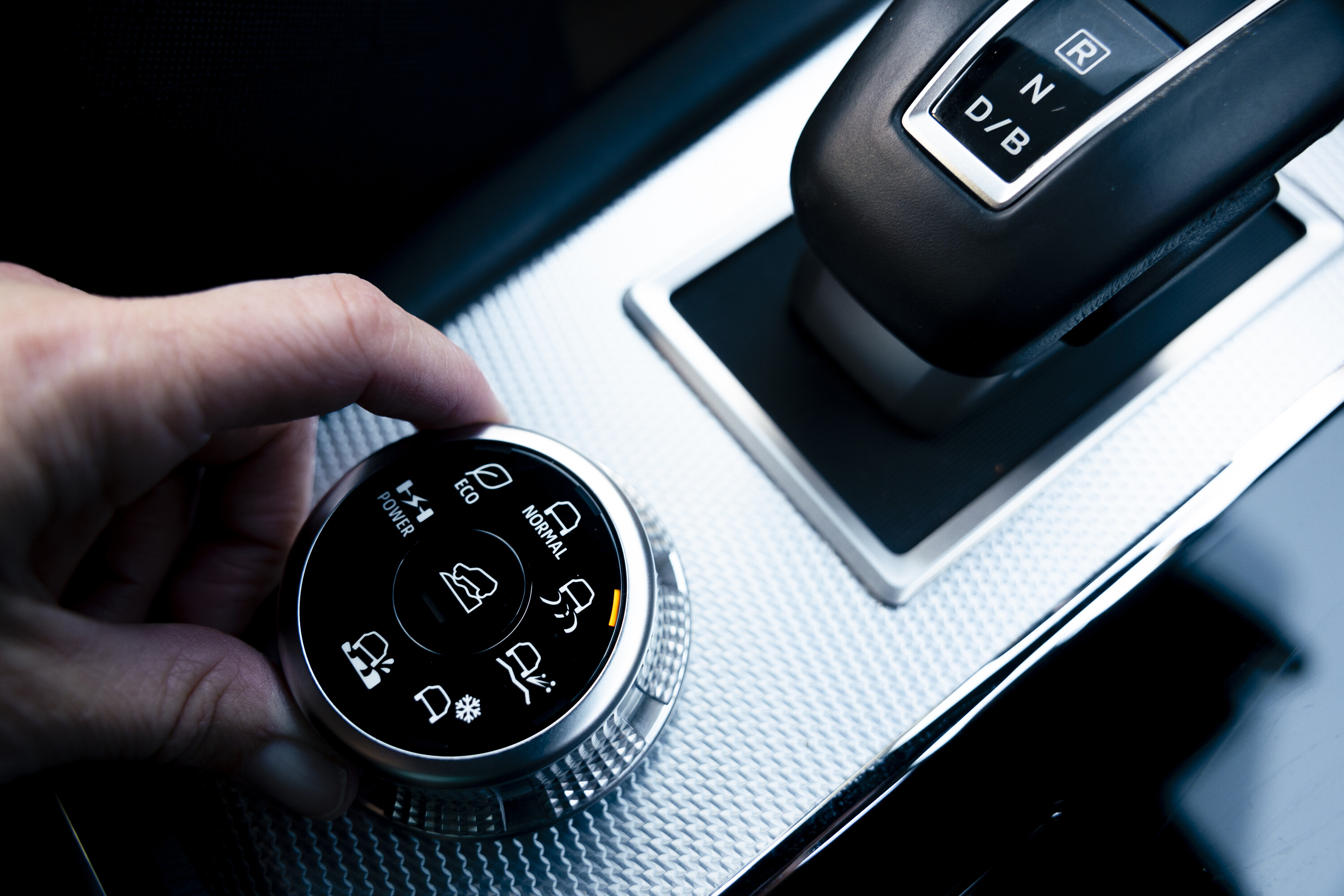
It’s almost too easy and a certain curiosity sets in. I switch the regenerative braking on and noticed it chewing some of my battery range, something I didn’t expect.
Turned off, the brakes feel more natural and, somewhat counterintuitively, the Mitsubishi’s overall range indicator tickles up by a few kilometres. Didn’t expect that. We arrive at our shoot location in thick fog and try to climb out of it on a mountain road with plenty of loose rock.
The Outlander’s suspension is working hard, knocking and rattling. But while it was clearly getting a good workout, body control was better than you might expect considering the rough surface.
Mitsubishi has spent some budget on isolating the cabin from drivetrain and suspension noise, and I was just thinking how the Outlander could cover a lot of bases when BING, the ‘low fuel’ lights up.

Perhaps I’d been exercising it a bit harder than I’d imagined up that incline, but this could reasonably be described as A Problem.
I try to explain to my colleague that we had a little issuette, and he points out that running the Outlander in Save mode might retain my electric juice for later city driving, but it doesn’t do a whole lot for my fuel economy in the meantime. Cue a lecture on how engines tend to work better as engines rather than electrical generators.
After some wandering around to get a bar of reception, I figure out where the nearest BP is and I reassure myself that all is good.
With multiple laps of back tracks and a flat tyre on the feature vehicle, the afternoon sun hangs lower as we finish up for the day. Unfortunately, our off-road activities have taken us a long way from the servo.

I realise that I have only 37km battery range but when the fuel and battery range are combined, it looks like I’ll be able to make it back to my place with a massive four kilometres of range showing. That’s no smell of oily rag – that’s barely a sniff. It also feels like a challenge.
As I make the trek down, I gain some battery range again, giving me a little more optimism. A fuel station appears but I’ve done that most illogical of things. I’ve committed to this plan. Others might call it the sunk-costs fallacy. There’s some emotional capital tied up into reaching home, dammit!
As I’m nearing the outskirts of Melbourne, the fuel goes to zero. Before I choke my fuel filter with detritus, I switch into EV mode.
I’m initially confident and then the EV range seems to start falling like a stone. Suddenly it vanishes, the LCD display blankly showing –.
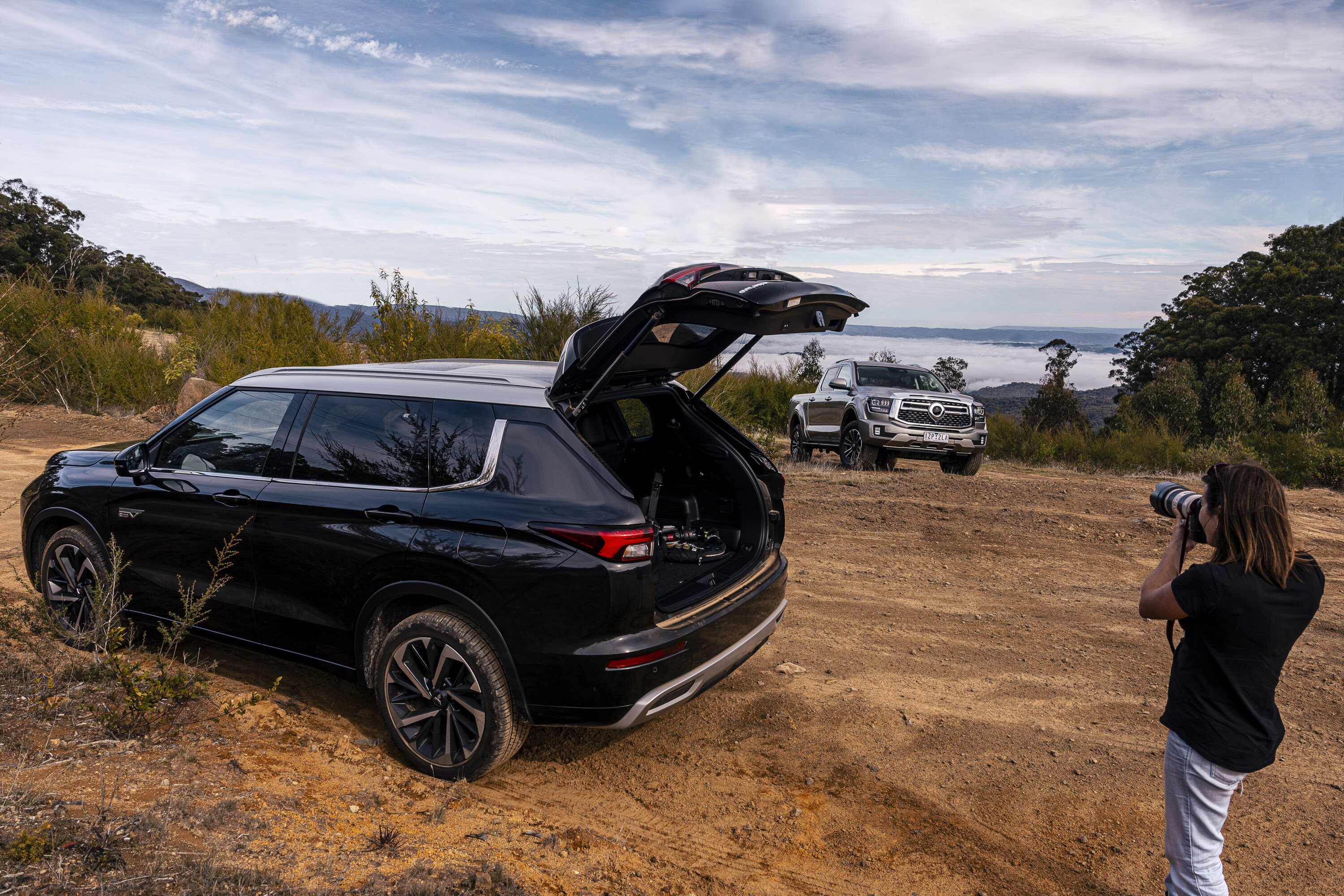
I curse myself for my blithe overconfidence, realising that at any moment I’m going to be pulling over at the side of the road and phoning a friend to meet me with a fuel can. I round a bend and there is my glowing beacon of salvation, a BP servo!
The pressure requires a personal pit stop first. I reset the trips and the battery charge remaining shows as 16km left and a total battery and fuel 49km. I could’ve made it. Little did I know the battery apparently keeps about 20 percent charge when showing empty. Oh well. Now I know.
Next up, I’ll try an urban EV-only challenge. How low can I keep fuel consumption and how many kilometres to a tank will I get?
Part 4: Going full eco
- Price as tested: $71,790
- This month: 1601km @ 3.4L/100km
- Overall: 3974km @ 5.1L/100km
Revhead Dewar loving the Outlander quiet life.
One of the things that gets me about electrified cars is the absolute partisan nature of it all – namely that if you like a vehicle that draws power from a battery, you couldn’t possibly also like a chunky V8, and vice versa.
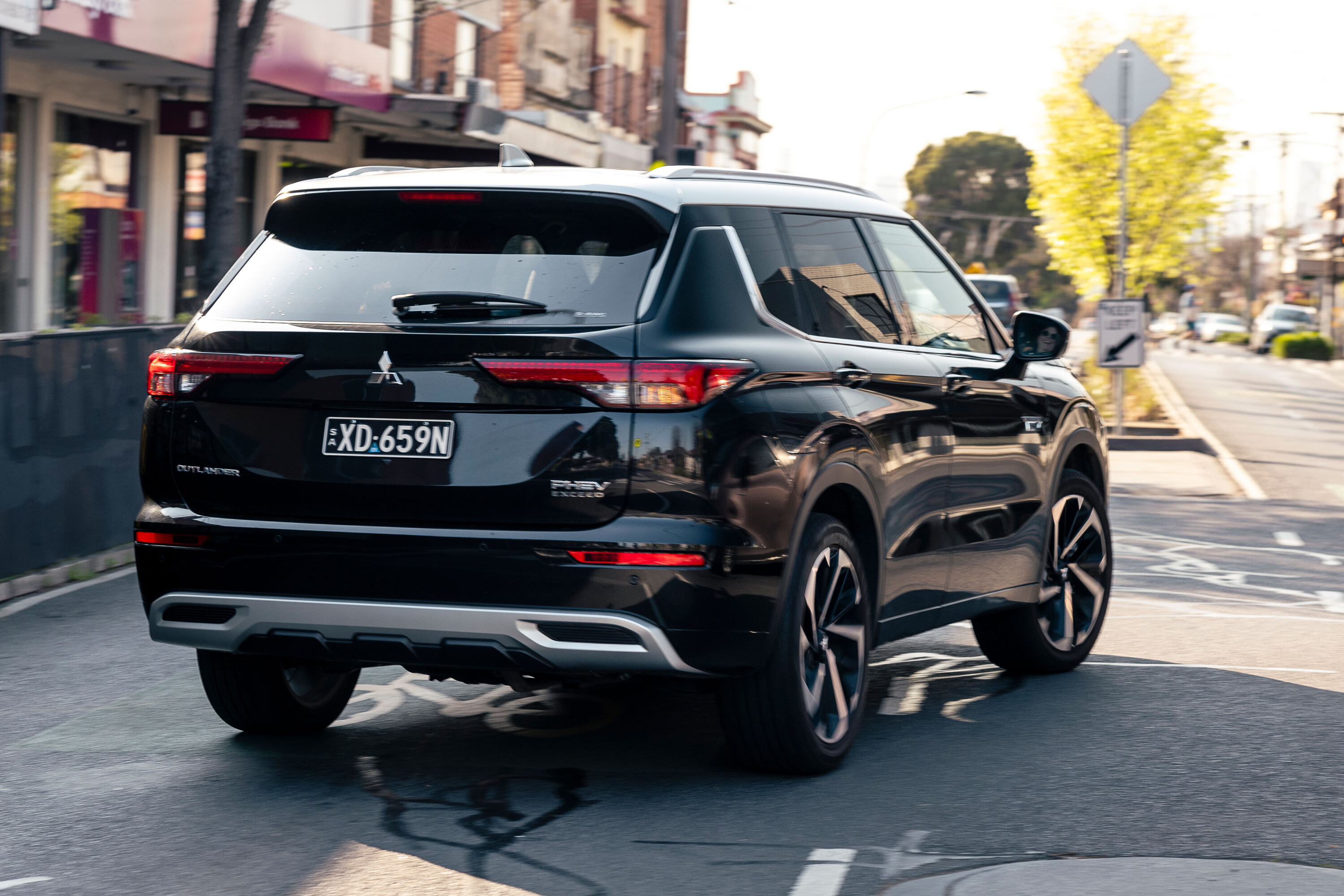
It’s complete rubbish, of course – something I’m given to ponder as a 5.7-litre Monaro gives it a blip next to me at the lights.
I roll onto the throttle as we ascend the on-ramp with no soundtrack other than a faint whine from the Outlander’s electric motor, but crack open the window a couple of inches to hear the small-block disappear up the road. The sound gets me a bit nostalgic and I realise how far we’ve come from my childhood in dad’s garage pumping myself up and down on his trolley jack as he attempted to clear a carburettor of some unidentifiable mung.
Will these days of shed time disappear in the new era of PHEV and electric? Will the joy of driving remain for the real enthusiast? Perhaps answering that question is somewhat above my pay grade.
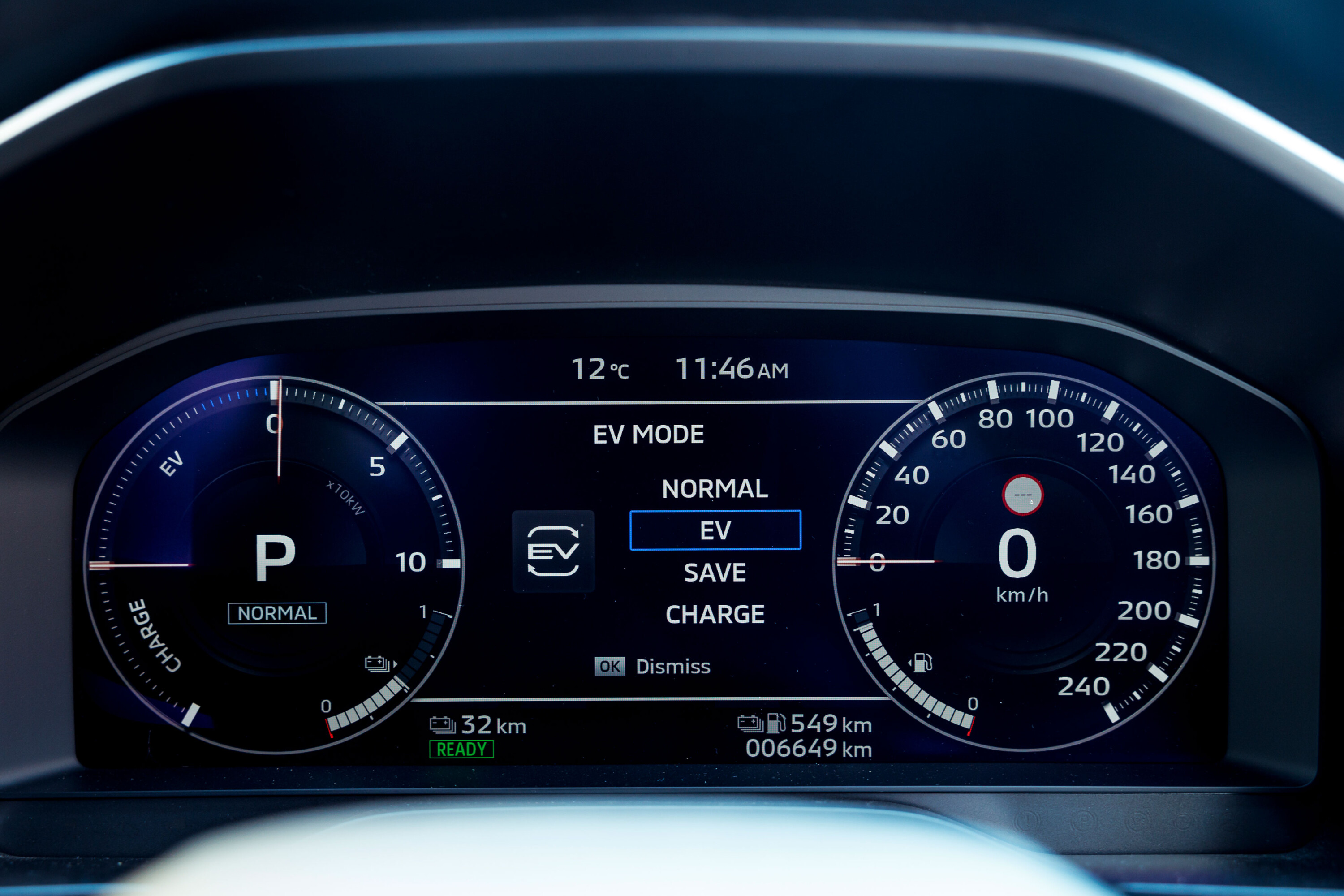
Over the past few weeks, I’ve really tried to lean into the electric side of this Outlander PHEV’s personality. I admit I’ve become used to the silent driving experience of the EV – so much so that when the ICE kicks in, it sounds a bit uncouth. My morning habit is to set Eco mode and crank the re-gen for my urban tootling, though frustratingly you need to re-enter those settings every time you get back in the car. As you might expect, the PHEV works best at low to medium speeds. The re-gen braking is great in start-stop traffic, keeping the battery levels level and often increasing the range, however the off-throttle lurch needs a sensitive clog to modulate.
I’m accustomed to, and love, the responsive acceleration from standstill at the lights. I find it lighter at the wheel than my FJ Cruiser but it’s much like any user experience. Over time, it becomes your normal. I felt quite the eco poster-child arriving at a sustainable bulk foods store in electric mode, and I’m fairly sure the greenhouse gas emissions from my dog, doing her best to look innocent, were probably greater than those of the Mitsubishi.
Rather than head back home to the usual cabin fever, I take advantage of the Outlander PHEV’s regular power outlet, open the tailgate and plug my laptop in to photo edit while catching the afternoon sunshine and beach vibes in Williamstown. Not sure I’d manage too much of that in a Monaro.
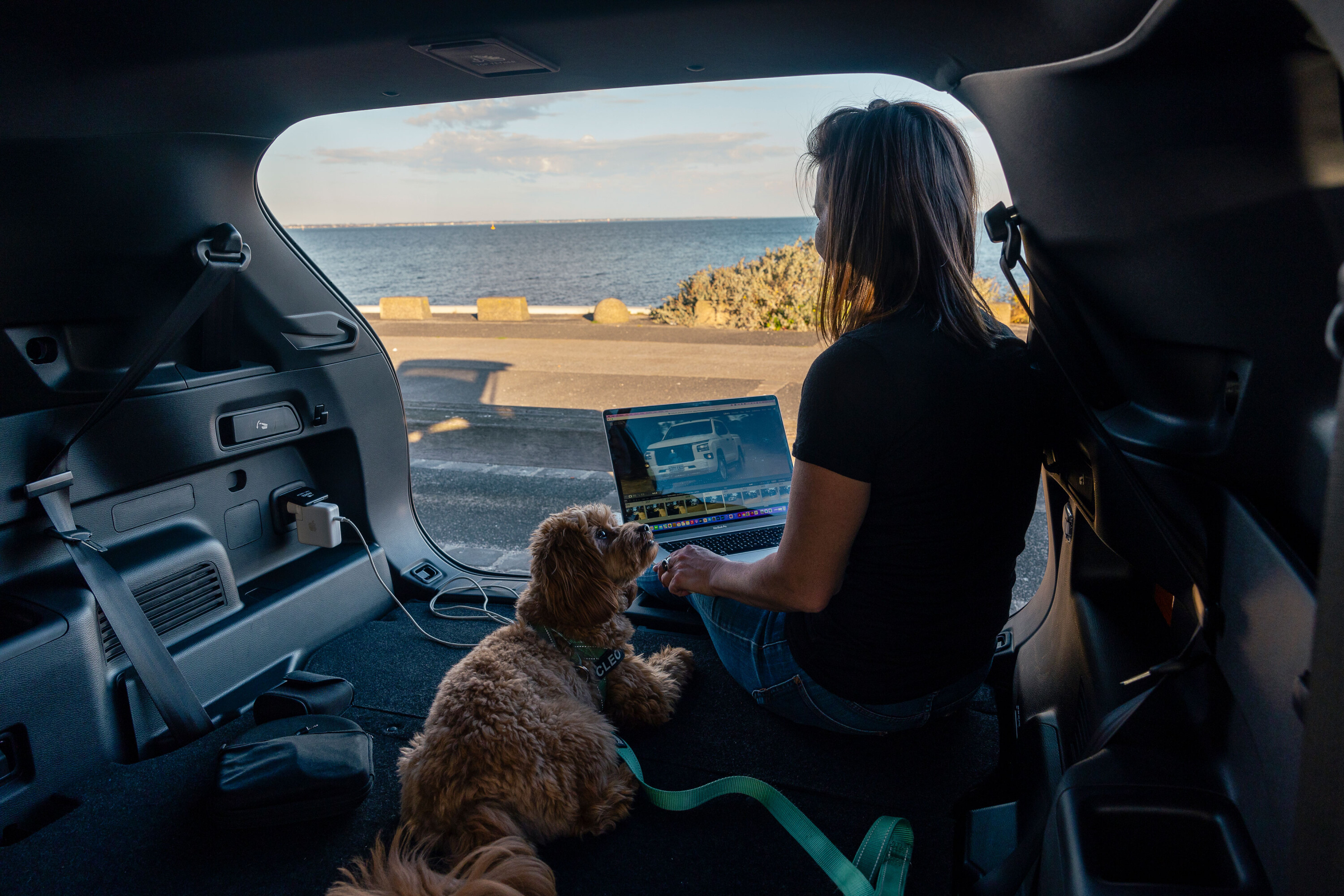
Discovering that the local charge station only has the Rapid or ultrafast Evie 150kW DC chargers of the CCS2 type was a setback though. Many charging stations aren’t compatible with the Outlander, which requires either type 2 AC, or increasingly uncommon CHAdeMO DC connectors, but after trawling the Plugshare app for type 2 chargers, I discover there are several I haven’t tried yet, roughly four kilometres away. These are claimed to quickly recharge to 80 percent capacity in as little as 38 minutes.
I’ve been solely home charging, taking a minimum of 12 hours to replenish range to about 64km thus far. So how did my electricity bill fare? Prior to the Mitsubishi’s arrival, a household of one, with no hubby or kids to sway the routine power use, was $100.25 and went up to $160 last month. That’s not bad at all in the greater scheme of things. It means that I’m getting 64km of electric range available to me each day and it’s costing $2 per day for that privilege.
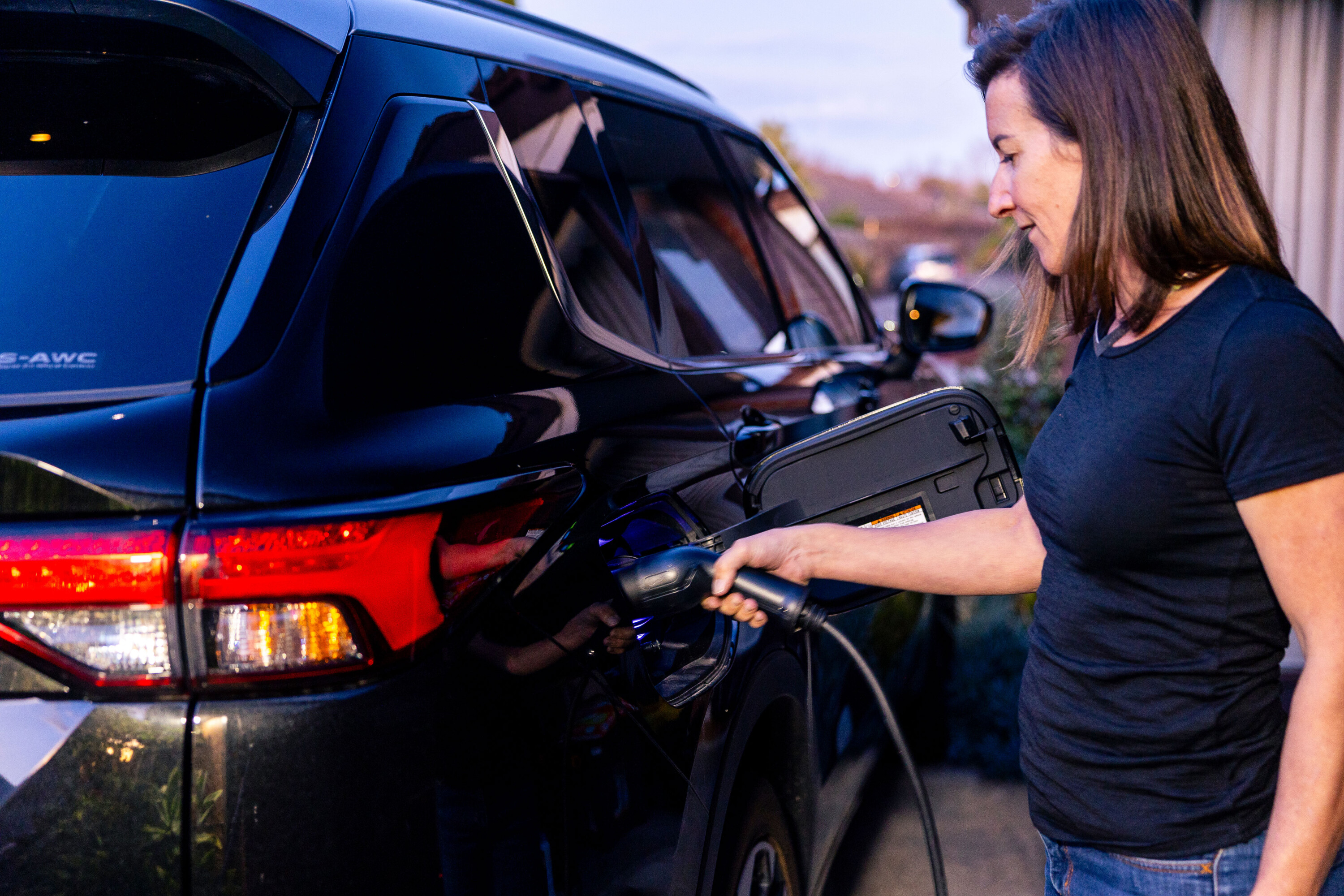
The Outlander is earning its spurs as a genuine all-rounder. It’s supremely comfortable and efficient for the local late night chocolate run, early morning gym sesh, and every chore you have on your to-do list. I’m going to give it a good leg-stretcher next month when I’m off on a family break to sunnier climes. Byron Bay is the destination and I’ll be loaded to the gunwales with camping kit. What can possibly go wrong?
Things we like
- Head-up display (no adjustment needed, which I usually can’t work out)
- Easy CarPlay connection
- Smooth take-off and transition from EV to fuel
- Regen braking
- 360-degree camera parking is a breeze
- Huge internal flat working space for my gear with all rear rows down
Not so much
- Start-stop button (Operator error, I don’t hold it long enough to start it and must press it again)
- Home recharging is inconsistent to activate likely user error
- Fuel efficiency spike on Charge mode
We recommend
-
 News
News2024 Mitsubishi Outlander PHEV GSR: Blacked-out flagship priced
New blacked-out range-topping variant added to electrified Mitsubishi Outlander line-up
-
 Reviews
Reviews2024 Mitsubishi Outlander Aspire PHEV review
Mitsubishi’s vastly improved Outlander SUV range reprises the best of the old line-up with the plug-in hybrid version
-
 News
NewsNew car calendar 2026: All the new cars coming to Australia next year
Here’s the WhichCar by Wheels guide to all the new cars that will launch in Australia in 2026. Check back in regularly for updates...



